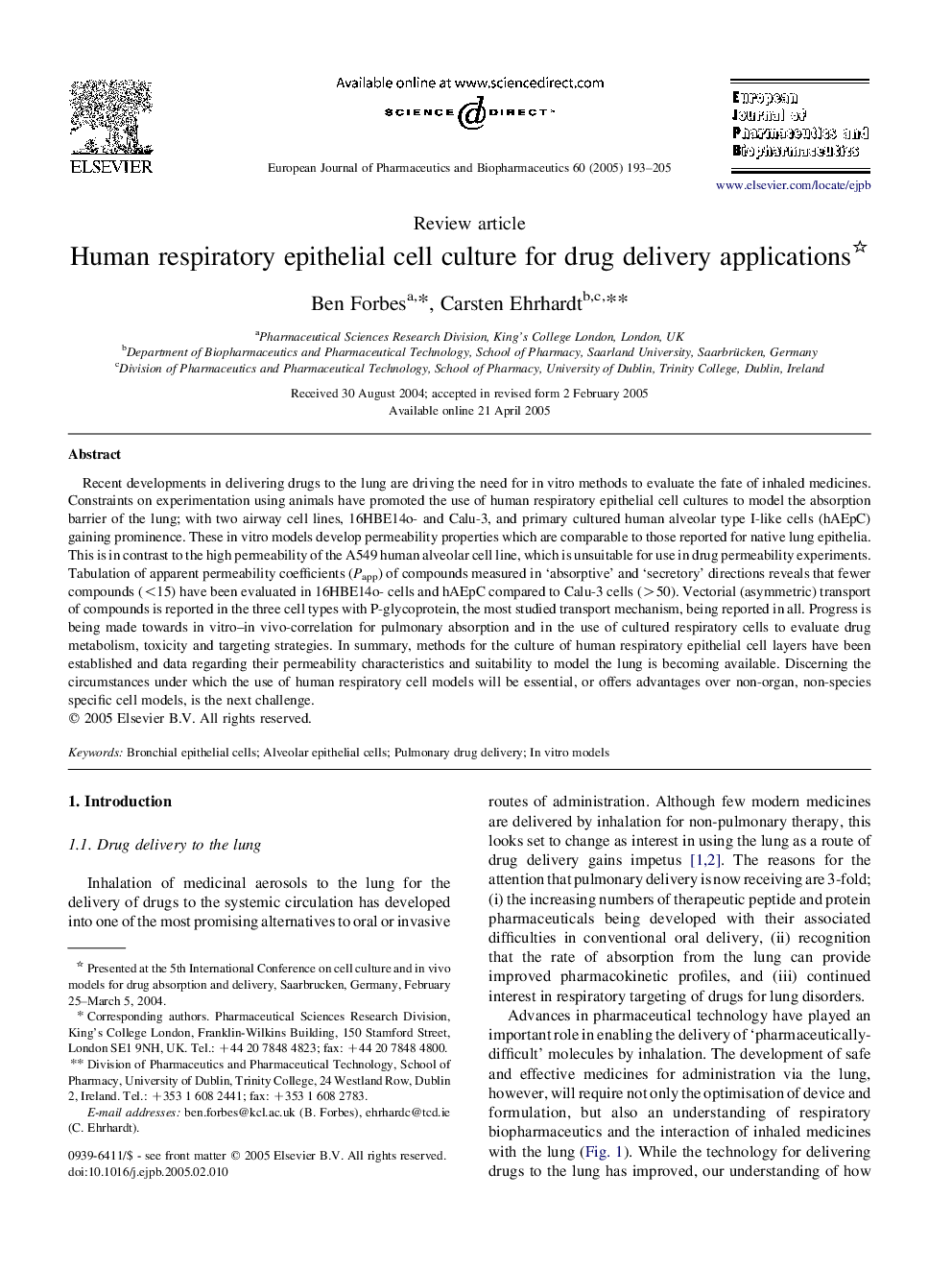| Article ID | Journal | Published Year | Pages | File Type |
|---|---|---|---|---|
| 9901462 | European Journal of Pharmaceutics and Biopharmaceutics | 2005 | 13 Pages |
Abstract
Recent developments in delivering drugs to the lung are driving the need for in vitro methods to evaluate the fate of inhaled medicines. Constraints on experimentation using animals have promoted the use of human respiratory epithelial cell cultures to model the absorption barrier of the lung; with two airway cell lines, 16HBE14o- and Calu-3, and primary cultured human alveolar type I-like cells (hAEpC) gaining prominence. These in vitro models develop permeability properties which are comparable to those reported for native lung epithelia. This is in contrast to the high permeability of the A549 human alveolar cell line, which is unsuitable for use in drug permeability experiments. Tabulation of apparent permeability coefficients (Papp) of compounds measured in 'absorptive' and 'secretory' directions reveals that fewer compounds (<15) have been evaluated in 16HBE14o- cells and hAEpC compared to Calu-3 cells (>50). Vectorial (asymmetric) transport of compounds is reported in the three cell types with P-glycoprotein, the most studied transport mechanism, being reported in all. Progress is being made towards in vitro-in vivo-correlation for pulmonary absorption and in the use of cultured respiratory cells to evaluate drug metabolism, toxicity and targeting strategies. In summary, methods for the culture of human respiratory epithelial cell layers have been established and data regarding their permeability characteristics and suitability to model the lung is becoming available. Discerning the circumstances under which the use of human respiratory cell models will be essential, or offers advantages over non-organ, non-species specific cell models, is the next challenge.
Related Topics
Life Sciences
Biochemistry, Genetics and Molecular Biology
Biotechnology
Authors
Ben Forbes, Carsten Ehrhardt,
